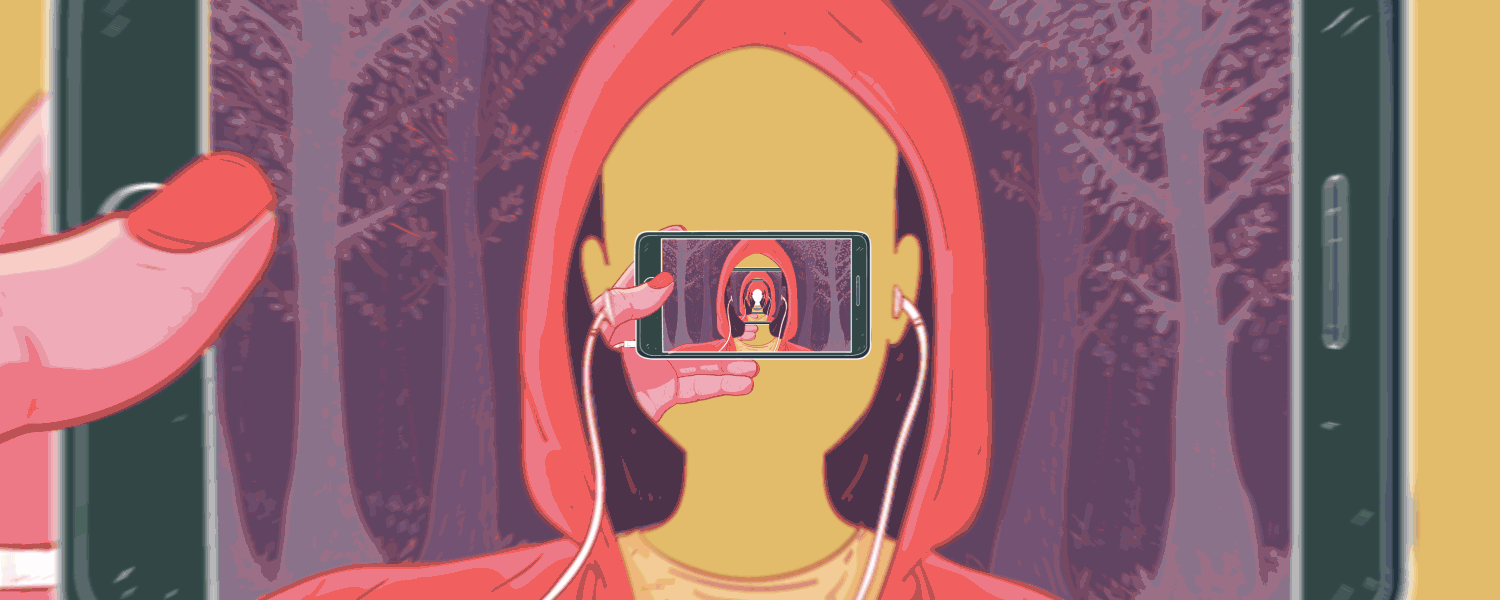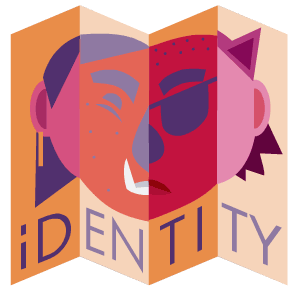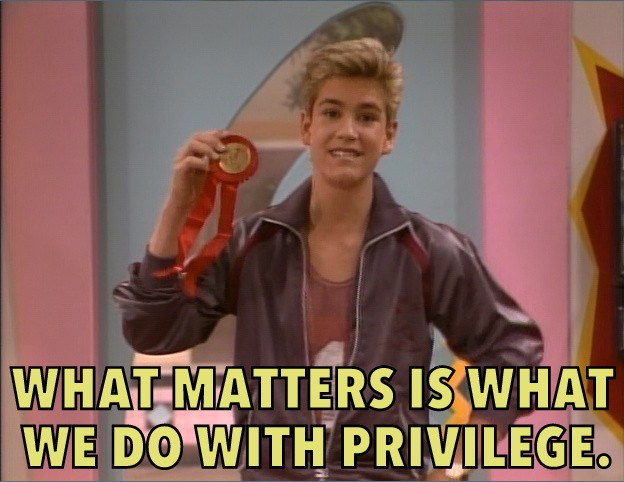

From police officers trained in interrogation by bots to the politics of Black Dandyism, exploring how ideas change the world often means writing about how they also change the way we see ourselves. This is as true for the importance of soccer to refugees stranded in Indonesia as it is to everything in our Afrofuturism section.
With our reading lists, we normally try to break things down by medium. That didn’t make sense here–this topic is a sprawler–so instead our recommendations are organized by family resemblance.
We hope this proves a fruitful introduction to this most personal of themes.

“Americans may have no identity, but they do have wonderful teeth.”
– Jean Baudrillard, America, 1986

Start Here
Here are our own key recommendations–the things that have stayed with our editorial team, and why:
- Abigail Ronck recommends “Women and Children First: Technology and Moral Panic” by Ben Rooney in The Wall Street Journal:
“While just a short blog post, it’s a really thoughtful commentary on which new technologies trigger moral panic in culture. They’re ones that change our relationship to time, space, and to other people. If it checks two of those three boxes, history shows that panic arises and plays out “‘in the bodies of children and women,’ starting as early as electrifying homes in the United States: “‘If you electrify homes you will make women and children vulnerable. Predators will be able to tell if they are home because the light will be on”¦ ‘” - I’m going to suggest that the most interesting example of something on identity to watch is a British TV series called Up. It started in 1964, by profiling 14 seven-year-old schoolchildren; every seven years, the documentary makers returned to interview them again. There have been eight episodes so far–the most recent, 56 Up, aired in 2012–and just as interesting as the causal chains between childhood events and adult lives is the participants’ evolving relationships with the documentary itself.
- Duncan Geere–our own honorary Swede–recommends this Aeon piece on the “Fantasy North:” “This is a lovely essay on our cultural fascination with the North, in both fantasy and reality, over the centuries–as well as its potentially troubling implications for society.”
- Matt Locke almost didn’t want to suggest something (he’s a twin, and “being a twin always makes this a bit weird”), but he points people toward this: “The Paradox of Identical Twins and What It Reveals About the Psychology of Personal Identity and Celebrity Culture.” It seems that being an identical twin is a lot like being famous.
- “¦and Kristen Taylor says: “I still think reading Lauren Berlant’s 2011 book Cruel Optimism is a useful thing to do. For a quicker way in, “this 2012 interview with Berlant about affect” includes some thoughts about end times and political spectacle (particularly relevant to this fall).” She also thinks this tumblr, savedbythe-bellhooks.tumblr.com, is rad.

Our Bodies
- “If You’re Black, DNA Ancestry Results Can Reveal an Awkward Truth“
Cara Rose DeFabio, Fusion [8-minute read] - “Almost All Living People Outside of Africa Trace Back to a Single Migration More Than 50,000 Years Ago“
Elizabeth Culotta and Ann Gibbons, Science [3-minute read] - “How the Secret Police Tracked My Childhood“
Carmen Bugan, BBC [7-minute read] - “Identity Over Time and Mr. Potato Head“
Samuel Arbesman, Wired [3-minute read] - “India’s Identity Scheme: The Magic Number“
The Economist [3-minute read] - “Can You Lose Your Fingerprints?“
Katherine Harmon, Scientific American [4-minute read] - “The Trip Treatment“
Michael Pollan, The New Yorker [20-minute read] - “This Is Your Brain on Silence“
Daniel A. Gross, Nautilus [12-minute read]
Our Culture
- “The IRL Fetish“
Nathan Jurgenson, The New Inquiry [7-minute read] - “I Think I Solved Instagram’s Biggest Mystery, But You’ll Have to Figure It Out for Yourself“
Caitlin Dewey, The Washington Post [6-minute read] - “Who Will Control the Identity of the Future?“
Bryan Pon, Medium [9-minute read] - “Will the Internet Kill Off Conspicuous Consumption?“
Richard Sennett and Carlo Ratti, The Guardian [3-minute read] - “Exploring Queer Technologies With Artist Zach Blas“
Antwaun Sargent, Posture [5-minute read] [via How We Get To Next contributor Corin Faife] - “Liking Is for Cowards. Go for What Hurts.“
Jonathan Franzen, The New York Times [6-minute read] - “The Culture War“
Tom Standage, Wired [4-minute read] - “Why Aren’t There More Women Futurists?“
Rose Eveleth, The Atlantic [6-minute read] - “Social Media Is Not Self-Expression“
Rob Horning, The New Inquiry [7-minute read] - “The Secret Lives of Tumblr Teens“
Elspeth Reeve, New Republic [20-minute read] - “The Ballad of Steinbjørn Jacobsen“
Eric Wilson, Literary Hub [16-minute read]
Our Technology
- “Why It Makes No Sense to Judge Groups of People by Their Histories of Invention“
Rebecca Onion, Slate [5-minute read] - “How the Invention of the Alphabet Usurped Female Power in Society and Sparked the Rise of Patriarchy in Human Culture“
Maria Popova, Brain Pickings [9-minute read] - “The Ladies Vanish“
Shawn Wen, The New Inquiry [5-minute read] - “The Tech Intellectuals“
Henry Farrell, Democracy [14-minute read] - “Closed Network: A Response to Henry Farrell“
Jillian C. York, Democracy [9-minute read] - “Is Google Making Us Stupid?“
Nicholas Carr, The Atlantic [15-minute read] - “Our Devices Are Not Turning Us into Unfeeling Robots“
Jenny Davis, The Kernel [12-minute read] - “Allende’s Socialist Internet“
Leigh Phillips, Red Pepper [5-minute read]
Our World
- “What Happens to #Ferguson Affects Ferguson: Net Neutrality, Algorithmic Filtering and Ferguson“
Zeynep Tufekci, The Message [6-minute read] - “If You’re Not Paranoid, You’re Crazy“
Walter Kirn, The Atlantic [10-minute read] - “How Technology Disrupted the Truth“
Katharine Viner, The Guardian [15-minute read] - “Estonia Is Demonstrating How Government Should Work in a Digital World“
Taavi Kotka, Motherboard [5-minute read] - “The Year We Obsessed Over Identity“
Wesley Morris, The New York Times Magazine [12-minute read] - “The Glass Cage: Automation and Us“
Nicholas Carr [2016] - “How Technology Could Threaten Deaf Identity“
Patrick Dehahn, The Atlantic [3-minute read] - “Netflix and Ch-Ch-Chilly: The Internet Really Has Changed Everything, Here’s the Proof“
Rex Sorgatz, Backchannel [32-minute read] - “How to Spend 47 Hours on a Train and Not Go Crazy“
Nathaniel Rich, The New York Times Magazine [15-minute read”]


How We Get To Next was a magazine that explored the future of science, technology, and culture from 2014 to 2019. This article is part of our Identity section, which looks at how new technologies influence how we understand ourselves. Click the logo to read more.
